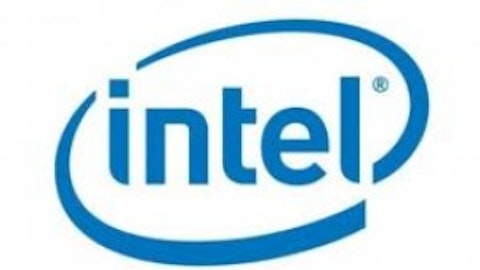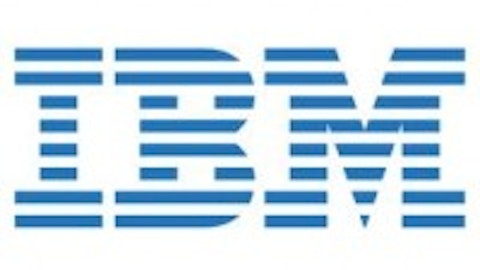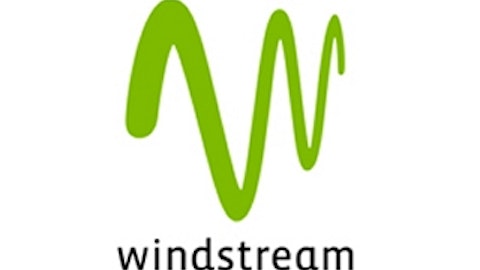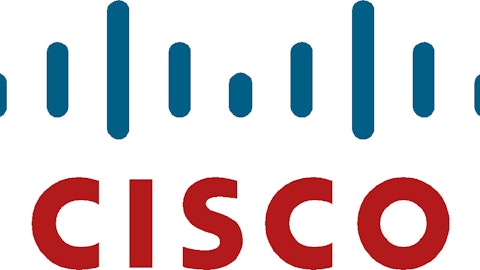When considering any stock for your portfolio, don’t be swayed by just the positives. Examine its pros and cons and decide whether its possible upside outweighs its risks. Let’s take a look at Infinera Corp. (NASDAQ:INFN) today, and see why you might want to buy, sell, or hold it.
Founded in 2000, based in California, and sporting a market capitalization of about $775 million, Infinera is an optical networking specialist, offering hardware, software, and services to telecom companies, cable companies, Internet content providers, and more. It used to be known as Zepton Networks.

Buy
The business Infinera is in is a big draw. As my colleague Dan Caplinger has explained, “In simple terms, the company puts pieces of a network on its chips and allows cost-effective transformations from optical signals to electrical impulses.” What’s so great about that? Well, Internet traffic is growing and the service providers building bigger networks want cost-effective components. The downside here, though, is that many of these companies, whacked by the recent recession, have been holding back on their spending. That won’t last forever, though. In its fourth-quarter conference call, management noted that, “Over the past four quarters, bandwidth consumption has increased, and customers across market segments are looking at increasing their network investments.”
These stats should give you a sense of the company’s potential: Per a Cisco Visual Networking Index (VNI) report, global mobile data traffic should grow 13-fold between 2012 and 2017, averaging about 66% growth annually, with video making up a growing majority of that.
Actual results from the company recently have been somewhat encouraging. Its fourth-quarter earnings per share (EPS) was a loss of $0.05, instead of the $0.06 loss expected by Wall Street, and revenue rose 14.4% over year-ago levels. Fellow telecom equipment specialist Juniper Networks, Inc. (NYSE:JNPR) , which has also been struggling due to big telecom companies holding tight to their purse strings, recently projected stronger spending soon.
Infinera bulls include some Wall Street analysts, such as at MKM Partners, which recently upgraded the stock, expecting a sharp turn toward profitability in 2013 — in the form of smaller losses.
The company’s management has impressed my colleagues, too, responding effectively and nimbly to changes in demand from the marketplace, developing a 100-gigabit offering sooner than originally planned — its DTN-X technology. The technology has been gaining acceptance in the market, with management recently noting, “Its traction has been phenomenal and we have entered the 100-gig market with force. In just over 2 full quarters of production, we have secured 22 DTN-X customer commitments, including 7 customers new to Infinera, and we have shipped over 2,000 100-gig ports.” Those customers include some big “tier 1” ones, such as CenturyLink, Inc. (NYSE:CTL) and Cable & Wireless, and they at least double the company’s global addressable markets. CenturyLink has been growing steadily, and offers a hefty dividend yield of 7%. It has solid free cash flow growth and has been making promising acquisitions, but its share count has been growing significantly, too, and its earnings are negative.
Infinera also sports little to no debt, which is a plus. It has about $200 million in cash, enough to last it a few years at its recent free cash flow burn rate .
Sell
A look at Infinera’s financial statements offers some unexciting numbers. Revenue has been up and down in recent years, and both operating and net income are negative — and have been for several years.
Infinera faces competition, too, such as from Alcatel Lucent SA (ADR) (NYSE:ALU) , which isn’t exactly in the healthiest condition, saddled with debt, heavily shorted, and aiming to cut costs. A $2.2 billion cash infusion from lenders has some hopeful, however.
Infinera’s valuation numbers aren’t too exciting. Its P/E ratios are negative, as its earnings are in the red. Its price-to-sales ratio of about 1.8 is above the S&P 500’s 1.4 and a bit above the industry’s 1.7. The picture can look very different once its bottom line turns from red to black, but this is where Infinera is now.
Hold (off)
Given the reasons to buy or sell Infinera, it’s not unreasonable to decide to just hold off on it. You might, for example, want to wait for the company’s losses to turn into gains, perhaps for a string of quarters.
You might also check out some other interesting telecommunication companies, to see if they seem like better bargains than Infinera. Perhaps take a look at industry giant Cisco Systems, Inc. (NASDAQ:CSCO) , which has been broadening its scope and even has a dividend yield near 2.6%. It’s potentially threatened by software-defined networks (SDNs), which reduce the need for hardware. It might also buy its way into that market, though, as Juniper has done.
The verdict
I actually own a few shares of Infinera, and am in the red on them. That shouldn’t influence your decision, however, as everyone’s investment calculations are different, and what matters most is how we expect the company to perform from here. Do your own digging and see what you think. The company may perform spectacularly in the coming years, but remember that there are plenty of compelling stocks out there.
The article Buy, Sell, or Hold: Infinera originally appeared on Fool.com and is written by Selena Maranjian.
Longtime Fool contributor Selena Maranjian, whom you can follow on Twitter, owns shares of Infinera. The Motley Fool recommends and owns shares of Infinera. It also recommends Cisco Systems.
Copyright © 1995 – 2013 The Motley Fool, LLC. All rights reserved. The Motley Fool has a disclosure policy.





